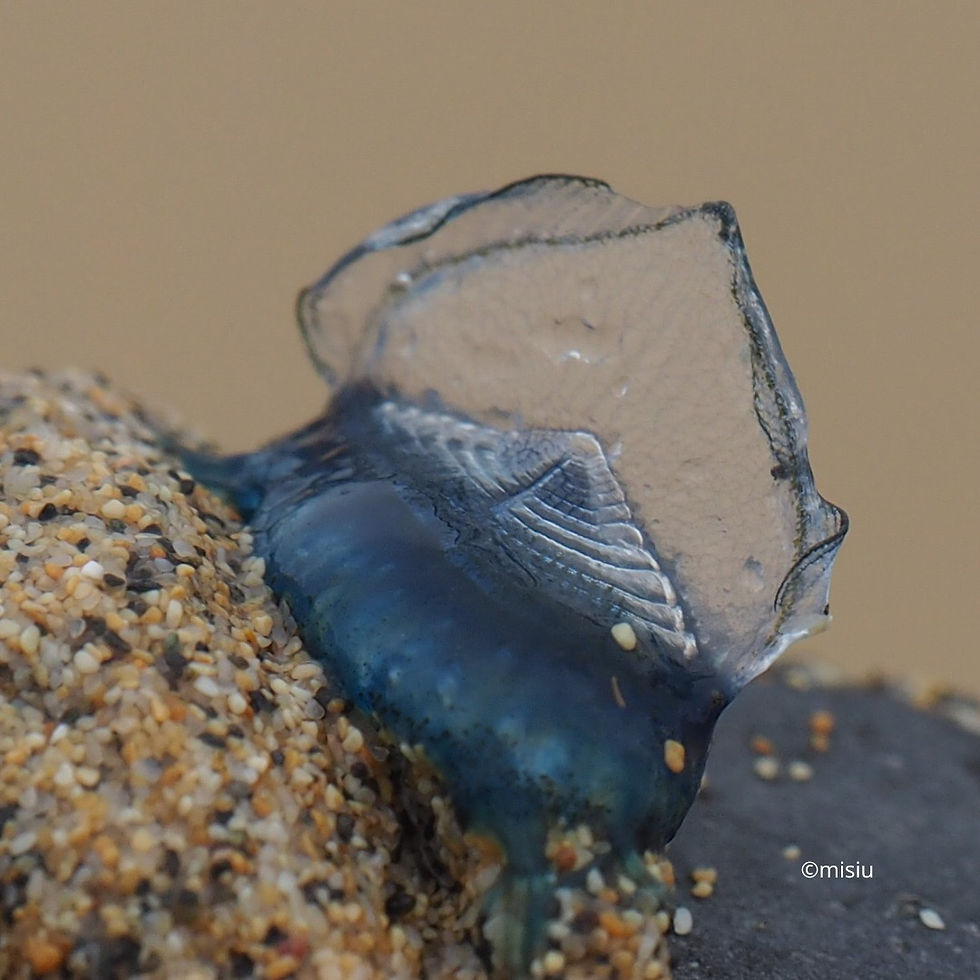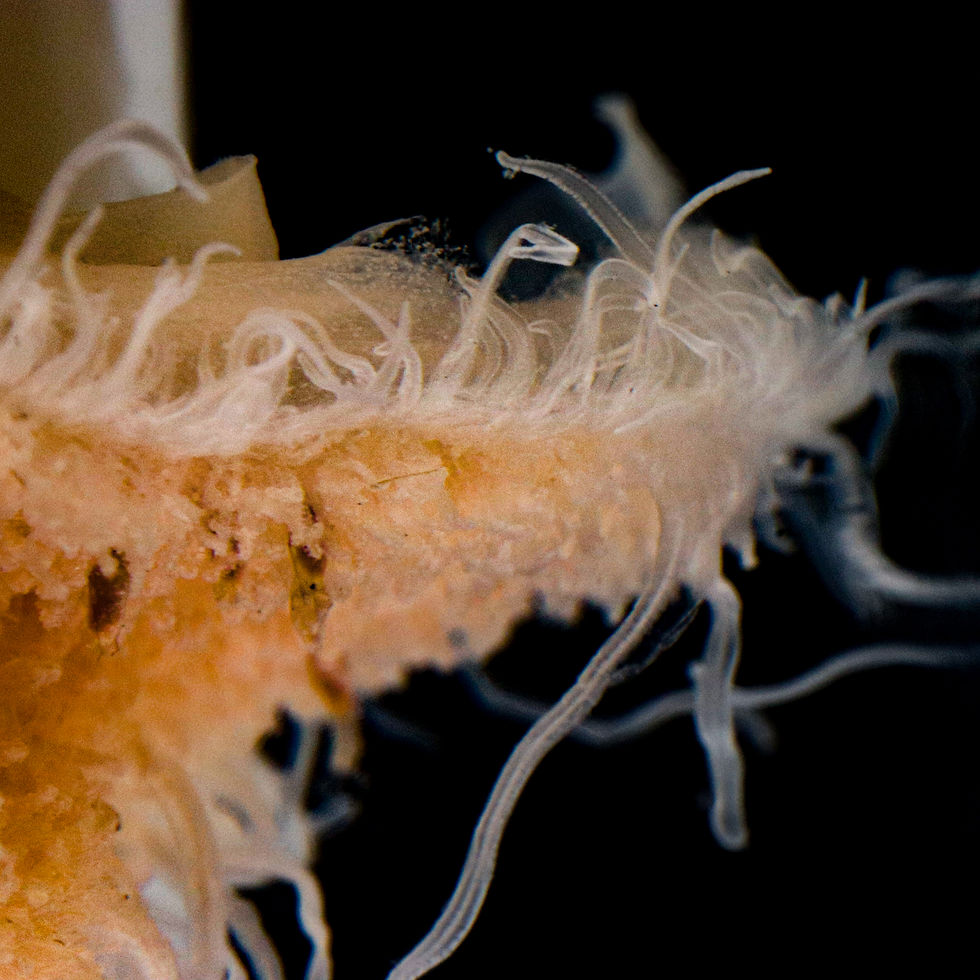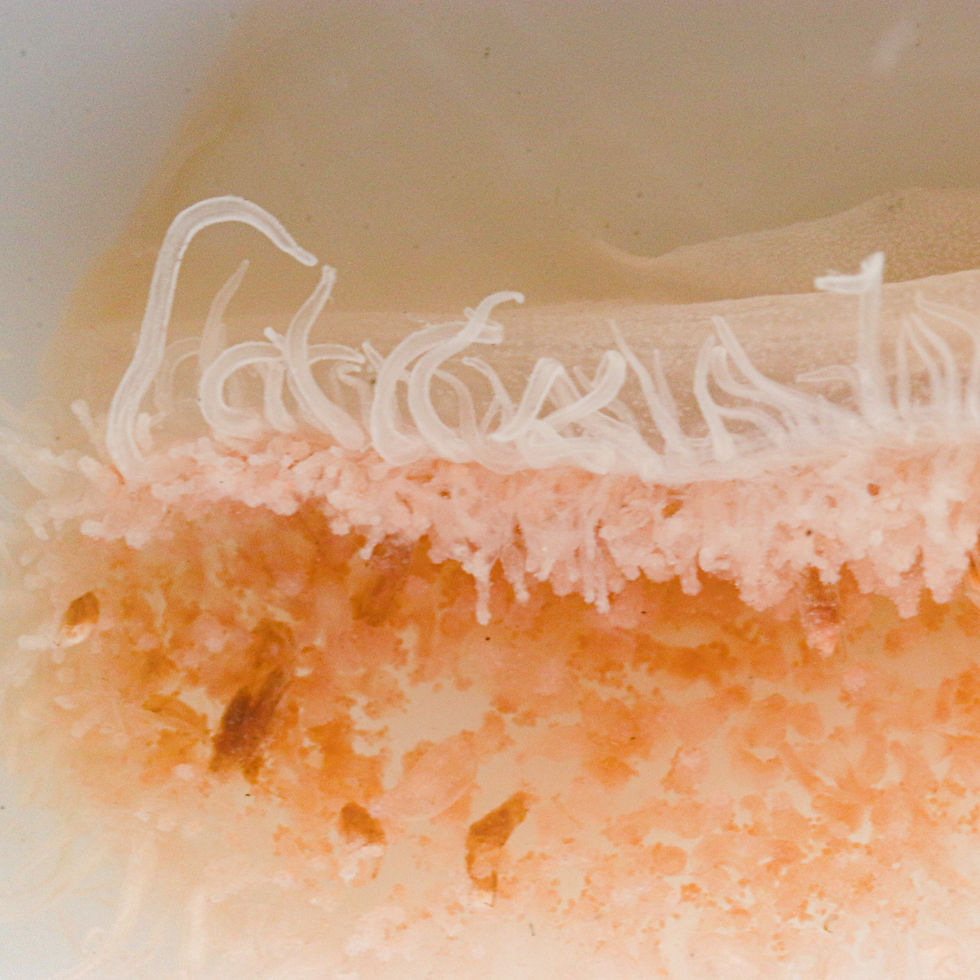Did you go to the beach or on the ocean lately? If so, you may have noticed the numerous jellyfish swimming on the water surface? The rising sea temperature during the summer period provides a more favourable environment and more food for jellyfish, thus enhancing their growth and reproduction. That’s why we will find more jellyfish in summer! In Hong Kong, you are likely to find different species of jellyfish swimming around, but the species introduced below is a little different from what you usually see. This one is called 𝘝𝘦𝘭𝘦𝘭𝘭𝘢 𝘷𝘦𝘭𝘦𝘭𝘭𝘢 (Linnaeus, 1758), and has a characteristic blue coloration among several other interesting features.

So what makes this species different from other jellyfish? Well for starters, it is not a jellyfish, but a hydrozoa. 𝘝𝘦𝘭𝘦𝘭𝘭𝘢 𝘷𝘦𝘭𝘦𝘭𝘭𝘢 belongs to the hydrozoa of the Porpitidae family and it is widely distributed in warm to warm-temperate waters, but it can also occasionally be observed in Hong Kong. Despite their wide distribution, individuals actually do not move or swim. Instead, they remain stable and sail by the wind on the sea surface. Each “individual” is composed of a hydroid colony, composed of many polyps, that feed on phytoplankton and other small marine animals, which can grow up to 10 cm.

𝘝. 𝘷𝘦𝘭𝘦𝘭𝘭𝘢 has a blue and oval structure which is made of cartilages with gas-filled pockets, providing buoyancy for them to float. Their blue colour originates from the carotenoid pigments contained in the prey they feed on. After digestion, the pigments are modified to the blue colour we see. This blue colour is used to screen the excess light from the sun to their body. There is also a small colourless and transparent fin sailboard across the top of the body, which allows 𝘝. 𝘷𝘦𝘭𝘦𝘭𝘭𝘢 to sail in the water pushed by the wind or float on the water's surface. That’s how they got their name of By-the-Wind Sailor. They also have long stinging tentacles which are used for stabbing their prey. Don’t worry! The tentacles will not cause great pain to us. Astonishingly, they can form large groups up to 100 kilometers wide floating together on the sea surface.

Even more surprising is that 𝘝. 𝘷𝘦𝘭𝘦𝘭𝘭𝘢 is divided into left-handed and right-handed populations (or should we say left-sailed and right-sailed). This allows them to sail toward the wind directions more comfortably in different hemispheres . In the northern hemisphere, Velella velella is left-handed, so they tend to move to the left of the wind direction; which is more efficient to sail in the same direction towards which the wind is blowing.

A citizen science project called the Hong Kong Jellyfish Project is collecting information about the presence, abundance, and distribution of jellyfishes and other related organisms in Hong Kong’s waters Hong Kong Jellyfish Project (www.hkjellyfish.com). However, no need to report the specimens presented in the Hong Kong Biodiversity Museum during your next visit. It’s just for you to enjoy!
Text: Lydia Chang

Comments